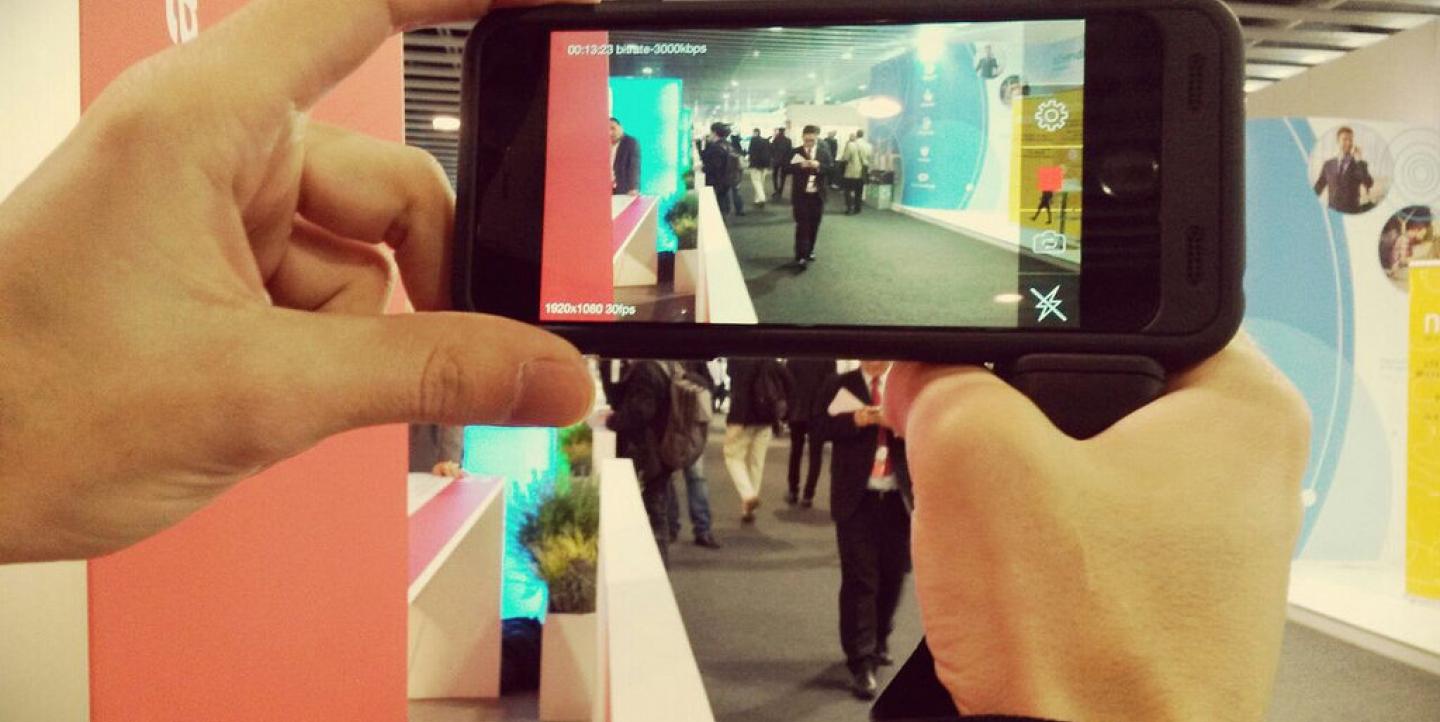During this year’s Mobile World Congress--the world's largest exhibition for the mobile industry--in Barcelona, reporters from the city’s public television station, Barcelona TV, tried a mobile experiment: for four days, they broadcast live news programs from the Congress made only with mobile technology.
On each day of the conference, a 20-minute broadcast featured a mix of presenter standups, live-streaming, non-real-time stories and even drone footage. The team filmed and edited with smartphones and went live using wireless 4G signals. Live shots relied on a number of different mobile cameras for a dynamic, professional presentation.
The result was an innovative broadcast, which took advantage of the smartphone’s portability, but still adhered to BTV’s high news standards. It makes BTV among the first newsrooms in the world to put forth an entire live show using solely mobile technology.
“We knew this was possible, and that the technology was there,” says Sergio Vicente, BTV’s Director. “It was just about trying it. If we didn’t try we would never know.”
BTV, a Catalan-language channel, has been using 4G wireless connections for some time in its reporting, namely through portable, lightweight “backpack” technology that supports multiple wireless connections. The backpack product, provided by TVU Networks, allows small teams to send stories as they happen via 4G.
But the Mobile World Congress experience took things a step further, relying completely on mobile devices for filming and editing.
Three young reporters familiar with new technology replaced their usual camera equipment with an iPhone 6, microphones and chargers. For filming, they used the app Filmic, and for editing, they used Pinacle. To send a live signal via Wi-Fi from the smartphone to a central mixing station, they used Wirecast. Non-real-time stories, filmed and edited with smartphones, were sent using FTP (File Transfer Protocol) software. (See reporters in action here.)
In lieu of a studio for mixing, BTV set up shop in a small room in the back of the Congress hall, and used a single laptop to manage all camera feeds and to get the footage television-ready. That area worked like the studio in a conventional TV station--gathering shots from various inputs and putting them together. But instead of using cables, it did so via Wi-Fi and 4G signals. Then, the team used the backpack technology to send a signal to BTV so the program could be sent to viewers' television screens.
Stories focused on topics like entrepreneurs and new apps, Mark Zuckerberg’s presentation, and even how the congress was affecting local traffic. Throughout the broadcast, presenters constantly reminded viewers that what they were watching was produced completely via mobile. (See an example of the broadcast here.) On the last day, drone footage captured aerial shots of Barcelona’s coastline.
In total, the equipment used by the 16-person team during the four days included: six smartphones with hand grips; a laptop for mixing; connections/cables; 4G connection; microphone with adapter; apps and software; and the "backpack" for sending the 4G mixed signal outside of the Congress. Vicente says the team could be much smaller, and in the future it will be. But since it was a first try, they needed many hands on deck to be sure things worked.
In addition to broadcasting the programs during the normal newscast schedule, a special section of BTV’s website was dedicated to the mobile reporting project, and a mobile application was designed especially for the occasion. The experience was also reported on Twitter from BTVMobile and BTVcat, and through the hashtag #BTVMobile.
Of course, the team did run into challenges along the way, Vicente says. Quality wasn’t always optimal, due to cuts and delays on wireless signals, especially at times when the conference was at its busiest and everyone was connecting to Wi-Fi. Selfie shots were challenging, because of the “mirror” effect of the iPhone’s video features. And the team also realized that long interviews don’t work on mobile. To remedy that, reporters first talked to interviewees to get a feel for possible soundbites. Then they asked the interviewee to speak again in a more focused way, to keep things short.
“We’re still far away from the ideal scenario that smartphones can be used to an extent comparable to what we have with bigger cameras and connectivity,” Vicente says, “but at the same time, we should try all possible advancements. It's exciting.”
He says BTV is very proud of the result from the Congress. In fact, the experiment was deemed so successful that BTV is now launching a mobile journalism reporting team within the newsroom, being led by the reporters in charge of the Mobile World Congress coverage. Vicente says he envisions they’ll use mobile for stories where extra portability is required, such as for breaking news events.
“In four days, we realized that it works, so now we want to use this technology regularly,” Vicente says. “The idea isn’t to substitute smartphones for cameras. The objective is just to have more options in the newsroom.”
Image courtesy of Barcelona TV.

